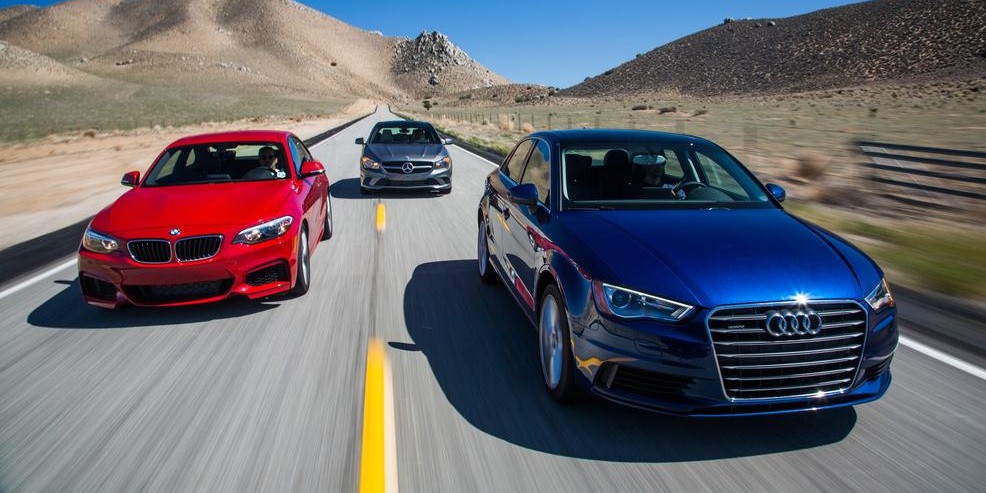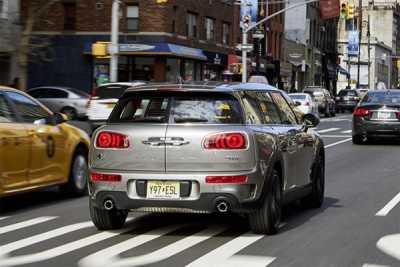Segment down 22% in Q2, oldest 2 models perform best
The Premium Compact segment was the fastest declining segment in the US car market in the first quarter with sales down 27%, and the situation only gets worse with a 31% decline in Q2. That brings the first half figure to just 42.519 units, down 29% on the same period in 2016, which means it remains the fastest declining segment in the US so far this year. The main culprit for this demise is the premium compact crossover segment, which grows 27% in the first half of the year and becomes larger in volume than the regular sedans, hatchbacks and station wagons. Only two out of the 8 players in the segment show single-digit growth in Q2, while all others lose volume by at least 25%. These two happen to be the oldest of the bunch, as the Lexus CT200h has been on the market virtually unchanged since 2011 and the Mercedes-Benz B-Class was first launched that same year, even though sales in the US only started in 2014 as an electric-only model.
Even with the addition of the Infiniti QX30 the segment would be deep in the red. The Qx30 is marketed as a crossover, while in fact it’s really just a hatchback. Then again, following the same reasoning the Mercedes-Benz GLA should be classified as a hatchback as well, so we’re not sure how to classify it. We’re interested in what our readers have to say about this matter. In Europe, it is sold under two different names for both segment: the Q30 hatchback and QX30 crossover, even though the only distinction between the two is the higher ground clearance of the latter. In the US, the Q30 is sold as the QX30 Sport, but Infiniti does not specify the take rate on that version, which would have made things a bit easier for us. For now, we’ll display it here for reference (it would instantly have become the segment leader), but keep it officially in the small SUV segment.
Highlights for the first half of 2017
- The Audi A3 maintains its lead and even grows its share of the segment as its 24% decline is lower than the overall score. Almost 17% of its sales were for the e-Tron plug-in hybrid hatchback version, and even with those substracted, the A3 would still top the charts. The e-Tron is actually up by more than 9% while the gasoline-powered sedan is down almost 29%. The launch of the RS3 later this year won’t bring much additional volume, but could act as a halo for the regular versions of the sedan.
 Its closest rivals Mercedes-Benz CLA sedan, BMW 2-series coupe & convertible and Acura ILX all three lose around 40% of their volume and are the biggest losers of the segment. The ILX finished Q1 in third place but was outsold by the 2-Series which reclaims its segment podium position. In Q2, all three outsold the QX30 which has slowed down after a very successful start of the year.
Its closest rivals Mercedes-Benz CLA sedan, BMW 2-series coupe & convertible and Acura ILX all three lose around 40% of their volume and are the biggest losers of the segment. The ILX finished Q1 in third place but was outsold by the 2-Series which reclaims its segment podium position. In Q2, all three outsold the QX30 which has slowed down after a very successful start of the year.- The hybrid Lexus CT is in its last model year as there won’t be a 2018 MY offered in the US, but it does manage to improve 3% in Q2, which helps it move past the Mini Clubman, down 31% in Q2 and -14% in the half. The arrival of the Countryman obviously hurts the formerly largest Mini on the market.
- The larger capacity battery in the BMW i3 EV can’t prevent a 25% loss in Q2, as it still has half the range of a similarly priced Chevrolet Bolt EV. The Mercedes-Benz B-Class EV remains a niche player with just over 50 monthly sales and will be phased out in the third quarter as Mercedes wants to focus on its EQ subbrand instead.
Note: “AP” designates models that are classified in the Alternative Power segment, presented here for comparison; “SUV” for the QX30 means it’s featured in the subcompact crossover segment but we mention it here for comparison; clicking on the model name opens the sales data page for that model; clicking year in the legend turns the display for that year on/off

